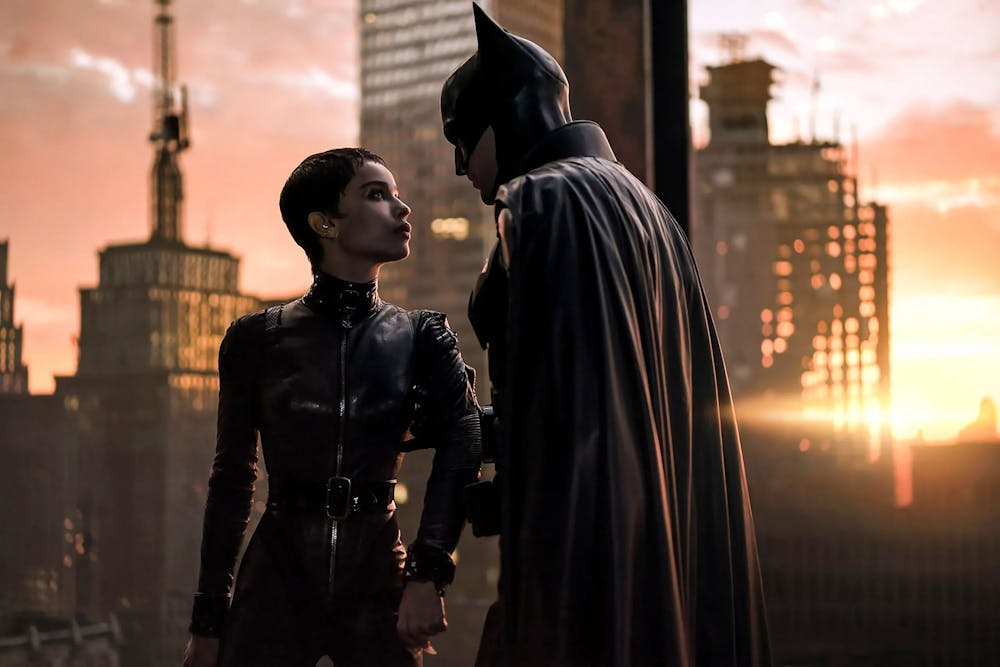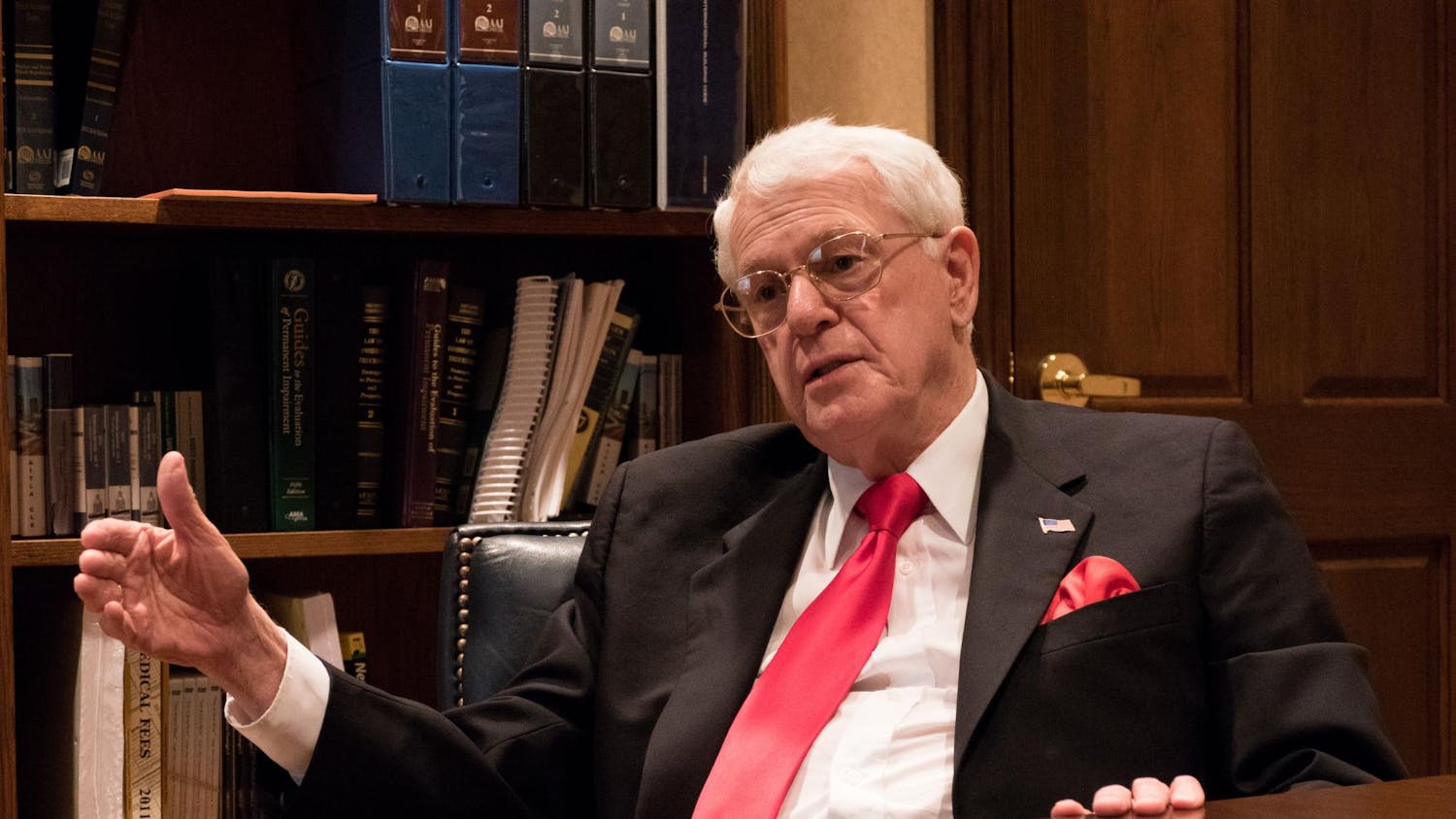“The Batman” is a horrifying tale of madness and mystery. In a masterful reinvigoration of film noir and hard-edged crime, director Matt Reeves uncovers the darkest knight yet.
Underneath the coal-stained cowl of Batman’s suit lies a broken detective. While the investigative nature of the masked vigilante’s vengeful spree is criminally underused in previous films, “The Batman” examines what it means to be the world’s greatest detective.
Almost two years into Bruce Wayne’s quest for retribution, he meets a formidable and psychotic serial killer hell-bent on exposing Gotham’s most corrupt officials. In a series of haunting murders, the Riddler leaves clues at each crime scene for Batman to solve.
In a career-defining performance, Paul Dano is sickening as the Riddler. In a dark green balaclava, the masked sycophant is maniacally killing his victims in bloody yet moving displays of cruelty. Like all of Gotham’s deadliest villains, he is powerful because he has nothing to lose.
In “The Batman,” it turns out that accountant Edward Nashton is the Riddler’s real identity. In a new backstory, it is revealed that he grew up parentless at the Wayne-sponsored orphanage funded by the Wayne family’s project for Gotham City’s renewal.
Related: [COLUMN: In ‘King,’ Florence Welch explains the difficulties of creating artwork as a woman]
When Bruce’s father dies after enlisting in the help of mob boss Carmine Falcone, the orphanage’s funding falls through. The Riddler resents Bruce for his status because despite being an orphan, Bruce will never be alone like the penniless Riddler.
It’s so poetically twisted how the Riddler and Batman are on opposite sides of the same coin. As orphans, the two are consumed by a lonesome rage and determined to make Gotham’s elite pay for their crimes. Their approach is different, however, as the Riddler believes maleficent destruction is the only way to help Gotham and Batman believes its inhabitants are deserving of redemption.
A younger, less refined Bruce Wayne also makes audiences privy to the cynic’s demons. Rather than depict an arrogant playboy committed to keeping up appearances, Robert Pattinson’s Bruce Wayne is raw, gritty and angry. He doesn’t just stay out of the public eye — he detests it.
When Pattinson’s Batman emerges from the shadows to bring reckoning upon Gotham’s most gruesome criminals, audiences see Bruce Wayne in his truest form. He’s not holding his punches. Rather than hide in the dark, this Batman embraces it.
Through visually-elusive cinematography and a haunting musical score from Michael Giacchino, every movement in “The Batman” has a purpose. A blend of gothic architecture and digitally-enhanced skyscrapers are juxtaposed beautifully with the high-class city of Gotham and its dark underbelly of criminal activity.
“The Batman'' will also captivate comic book readers as it combines the stories of intricate villains and antiheroes in a single, spine-chilling narrative.
Colin Farrell is unrecognizable as the Penguin, a scarred mastermind and right hand to mob boss Falcone. In a fiery car chase with Batman, the seedy nightclub owner is exposed as a grimy source of criminal corruption.
The equally chilling yet hopeful and seductive Catwoman works alongside Batman in this story after he enlists in her help to investigate the Riddler’s string of victims. Zoë Kravitz is intense and elegant as superfighter Catwoman, and the chemistry between Kravtiz and Pattinson isn’t just passionate and magnetic — it’s consuming.
If film is a mirror of society, “The Batman” unearths humanity’s violent core.




